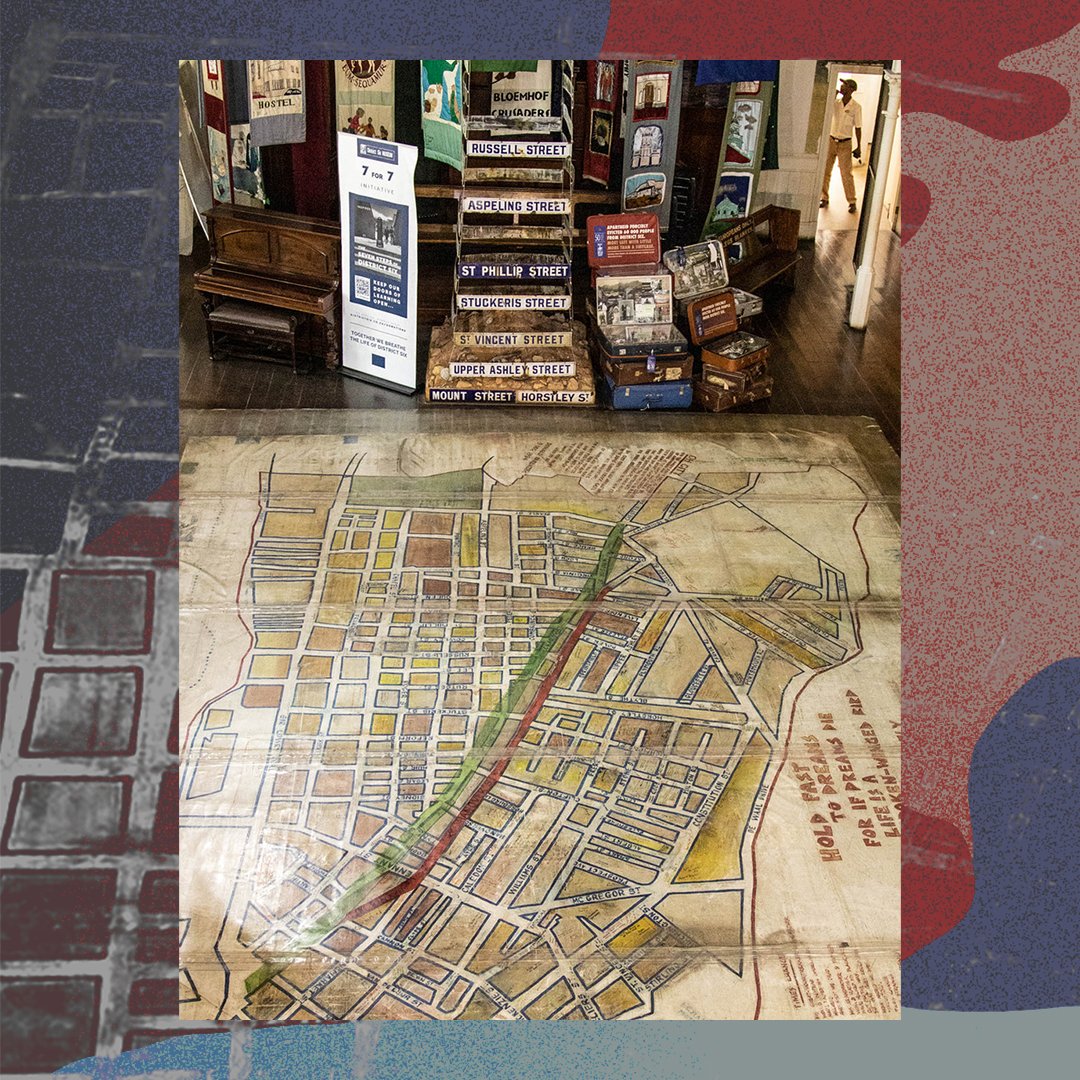Inclusive Heritage ‘Kanala’ (please)
|
The District Six Museum, in the old Methodist Mission Church of South Africa in Cape Town, recalls the life of a once-vibrant, racially mixed inner-city residential area and its destruction under apartheid. Inclusive Heritage ‘Kanala’ (please) explored with the Museum creative processes making their installations and archival material accessible to blind and partially blind people. This was made possible through a Micro Award from British Council Unlimited, I received in collaboration with writer, podcaster and blind disability activist, Lois Strachan. The District Six Museum Curator, Tina Smith hosted a walk-through for Lois and me attending via WhatsApp so that we could gain an initial understanding of the space, its current installations and accessibility. This helped us to prepare for a half-day workshop with Museum staff and former residents, those who provide guided site walks to visitors and members of the Seven Steps Club. The project looked at ways blind and partially blind people may experience visiting Museums that are engaging for all visitors. We considered the role language plays when evoking memories, particularly those of a complex and sensitive nature from a less ocular centric perspective. The use of digital technology and social media to engage a diverse audience was central to our discussion, as was the packaging of content for the purposes of further project exploration. Social media posts were designed to show the process of the project and reach a wider audience. The Alt-text content, as shown below with the photographs instead of captions, provided detail to support blind people who may not know the history of District Six, nor have visited the Museum, or are unfamiliar with the concept of a phygital collaboration. The Alt-text embedded with these photographs on my website is shorter acting as beacons to navigate my text. 
A blind white woman kneels in front of a museum installation touching the writing engraved in its plasterwork. To her right, is a mixed-race woman with her back to the viewer holding a mobile phone. A white woman’s face can be seen on the phone screen observing this exploration via WhatsApp. Tina Smith, the Curator of District Six Museum writes: “At the heart of the Museum's memory work is the retrieval of stories (mainly from District Six and other places of forced removals) the work of the archive involves sound and orality which make up interviews and recording of oral testimony be it personal or collective … This pilot collaboration was timeous – from an educational and curatorial viewpoint, it raised our consciousness around the challenges facing the visually impaired. It was thought-provoking and asks us to consider foregrounding what is often overlooked or taken for granted in our methodology and the way we engage audiences with specific disabilities. It encourages a closer look at archival/research material and how it is collected, curated, and presented to the public and made accessible to a broader visitor audience and educational engagement programme... This approach emphasized the creative use of descriptive language and ways to interpret a story by using the appropriate adjectives to 'paint' a vibrant story with words. It promotes a mindfulness in telling a story that can evoke an emotive drama allowing the imagination to complete what is not seen.” Tina introduced me to Sandra Dee, a former resident of District Six and a close friend of the late Kewpie, Daughter of District Six. Sandra Dee generously offered to share with me her life story and the history of Cape Town’s queer community. Her digital story made with minimal resources acts as an introduction for a more extensive recollection. Inclusive Heritage ‘Kanala’ (please) was a deeply personal project for me because in all the virtual communications I was at the Museum or in the Fairy Godmother Princess Project shop. Through the conversations and background sounds, the sense of touch and smell they evoked, I saw myself included. |
|
© Karren Visser. Inclusive Heritage 'Kanala' (please), funded by Unlimited, 2022 – 23. |




